|
A walk through Bermondsey and Rotherhithe, SE London
A winter Thames-side stroll
(Photos ©urban75, February 2006)
With a persistent hangover still nagging from the night before, we decided to take a head-clearing walk along the Thames, heading east from central London.
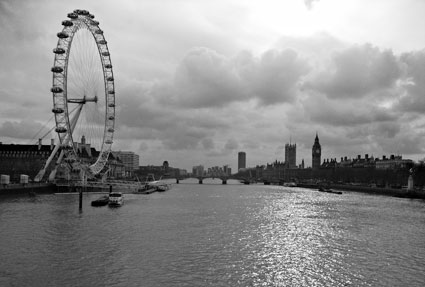
Looking west from the Hungerford pedestrian bridge.
Braving the cold February winds, we crossed the Thames by the Hungerford Bridge and headed east, passing the crowded stalls of the Waterloo book fair.
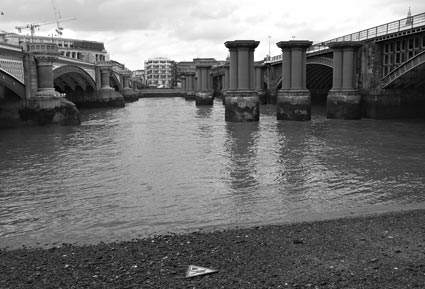
Blackfriars old rail bridge.
The disused Victorian Romanesque piers of Blackfriars rail bridge were found to be too weak to support modern trains, although the adjacent, less attractive, bridge still carries rail traffic.
To the left is Blackfriars Bridge. The original road crossing was opened in 1769, with the current bridge being designed by Joseph Cubitt and built in 1860-9 at cost of £401,131.
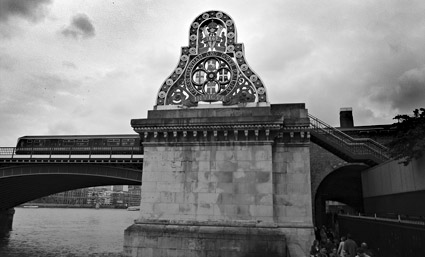
Blackfriars company insignia
On the south side of the bridge the attractive insignia of the old London, Chatham and Dover Railway can be seen, preserved and in excellent condition.
The disused bridge support is now used as a platform for drinkers at the nearby pub.

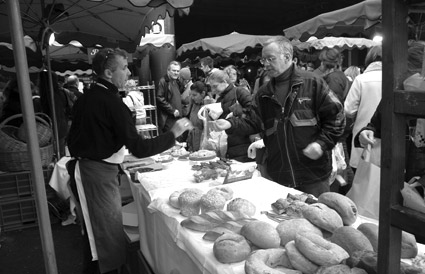
Bread seller, Borough market.
Historically focused around a wholesale fruit and vegetable market, a weekly gourmet food retail market has sprung up under the shadow of Southwark Cathedral.
There's some fabulous food to be found at this market on weekends, but it can get very busy and some of the produce is well pricey.
I bought a hefty slab of organic Bread and Butter Pudding for £1.50, and it was absolutely delicious!
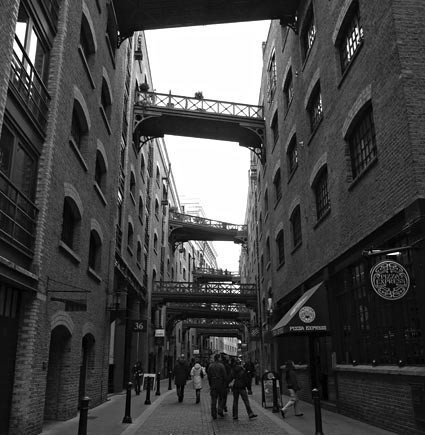
Butler's Wharf
Completed in 1873, Butler's Wharf was once the largest warehouse complex on the Thames.
Built to store dry goods and spices being imported from the Empire, the complex closed in 1971 as cargo containerisation and de-casualisation of the docking workforce led to the docks being relocated to Tilbury Docks.
In an attempt to offset costs and keep vandals at bay, the owners, Town and City Properties Group Ltd, rented out the wharves as individual storage and light industrial units.
Artists not adverse to roughing it in non-residential accommodation, soon took advantage of the expansive gallery space on offer, with all seven warehouses eventually being used by artists between 1971 and 1980.
By the end of the 70s, Butlers Wharf was hosting the largest and most diverse community of artists in London, with painters, sculptors, printmakers, photographers, dancers, performers and crafts people all making a home there.
In time honoured fashion, the bustling community soon caught the eye of developers who saw lucrative 'lifestyle' potential a-plenty, and by the mid 1980s, all of the artists had been shunted out, with many relocating further east.

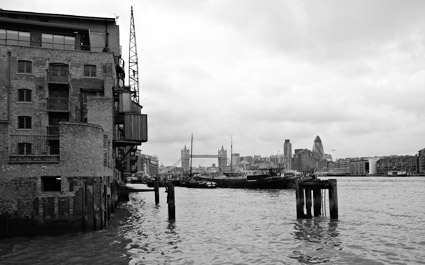
Looking west along the Thames.
Once you pass Tower Bridge, the walk becomes almost entirely devoid of tourists and, well, everyone.
Here you can see Tower Bridge in the distance, with the distinctive outline of 'The Erotic Gherkin' skyscraper to the right.
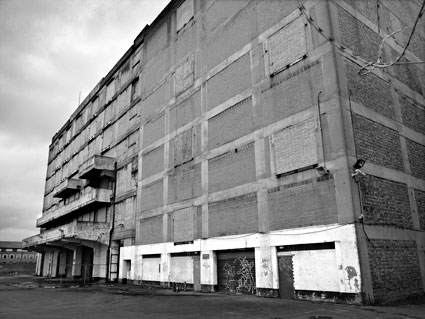
Old warehouse, Bermondsey.
Up until the second war, the wharves in Bermondsey and Rotherhithe were handling a vast range of goods, with huge cold stores between Jamaica Road and the river.
The area suffered considerable poverty and deprivation, with workers chasing low-paid casual work and having to live in terrible conditions.
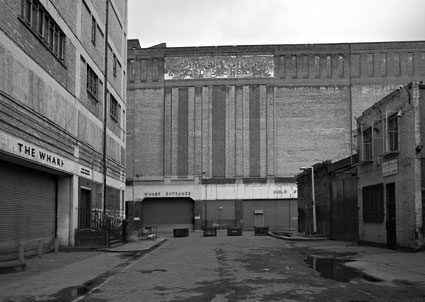
Chambers Wharf and Cold Stores
Looking like a scene out of the 1970s, the abandoned Chambers Wharf in Bermondsey has the air of an 'exclusive development'about to happen.
Two episodes of 70s Capri-racing cop show The Professionals were shot here, and the place was taken over for a huge squat party on new years eve in 2004.
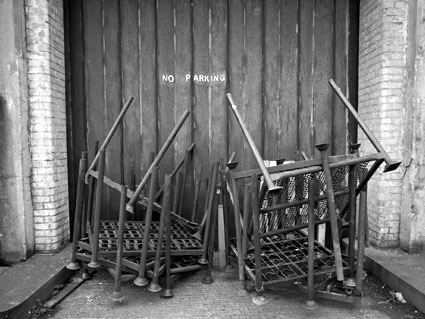
Metal things, The Wharf
Adjacent to Chambers Wharf is another abandoned large warehouse, with curious bits of metal dumped outside.

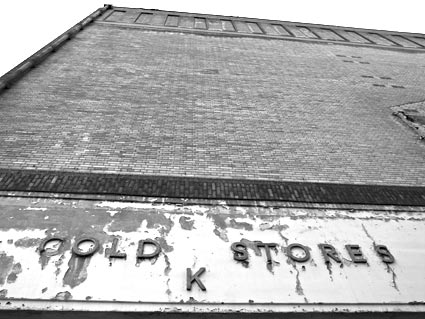
Chambers Wharf sign.
Crumbling sign above the entrance to the 'K' cold stores.
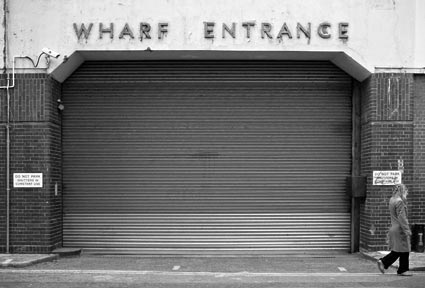
Passing the disused entrance
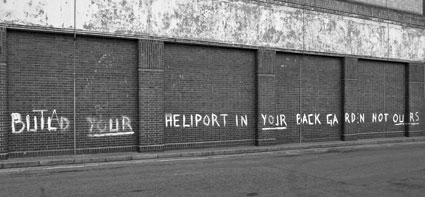
No heliport graffiti
Locals voice their disapproval at a noisy heliport development for the well-heeled: "Build your heliport in your back garden and not in ours."
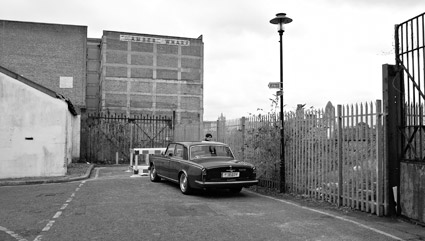
Rolls Royce outside Chambers Wharf
This looked like a scene out of 'The Sweeney.'
Some sharp-suited guy in a Roller purred past and then parked up a deserted side street and lurked in a suspicious manner.
Incidentally,the warehouse sign in the distance reads, "AMBER WHARF."

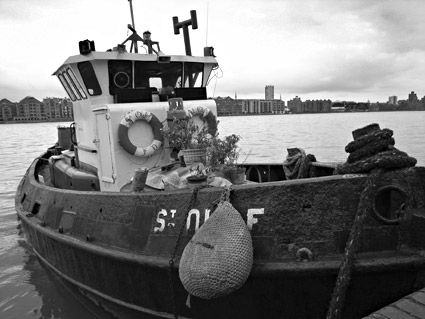
St Olaf boat
Looking a little well-worn, this boat on the Thames seems to have had quite a bit of patching up over the years.
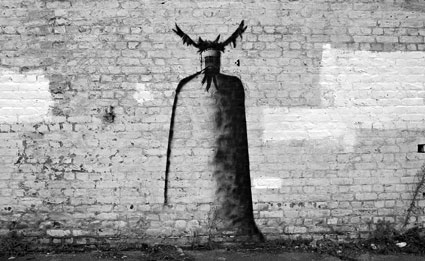
Graffiti, Bermondsey
I rather liked this work!
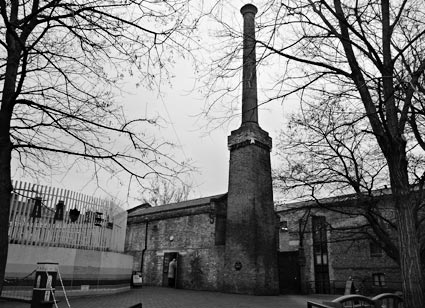
Brunel Engine House Museum, Rotherhithe
Situated on the appropriately named Railway Avenue, this small museum is inside an engine house built to house the steam pumps that kept the Thames Tunnel clear of water.
When the East London Line was electrified in 1913, the building was abandoned after the installation of electric pumps.
Restored in 1975, it is now an International Landmark Site.

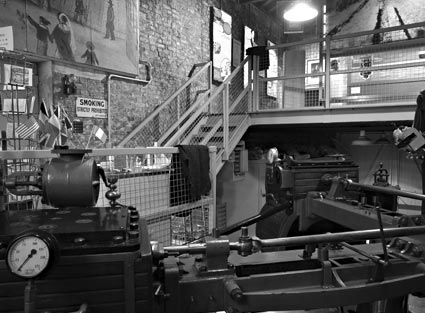
Inside the Brunel Engine House Museum
It has to be said that there's not a great deal of stuff to see at the Museum, but we liked the watercolours showing the construction of the tunnel and the Victorian, 3D effect scenes in glass cases.
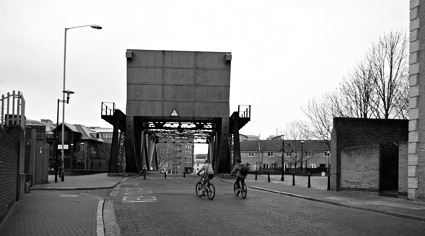
Old swing bridge, Rotherhithe.
After the docks closed in the 1970s, the vast majority of the derelict docks were filled.
This impressive looking swing bridge has certainly seen its last movement.
In nearby Surrey Docks, 90% of the docks were filled in, with the name being controversially changed to Surrey Quays in 1989 after a Shopping Centre was built on the infilled southern part of Canada Water.
|